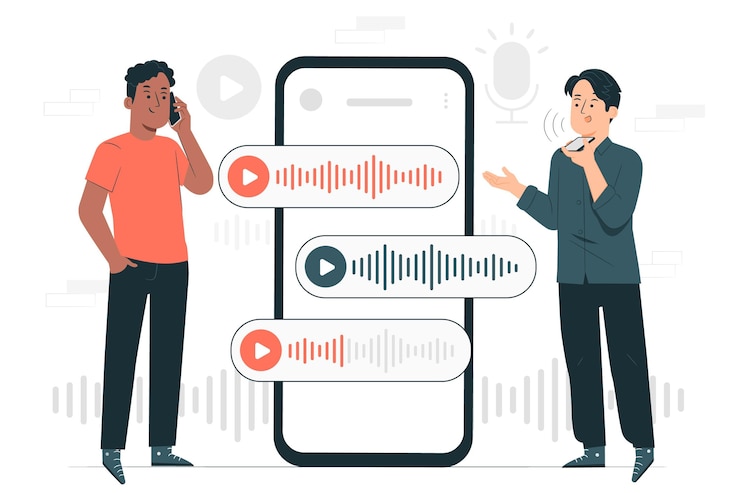Words are powerful. They are the bridge between your brand and your audience, the means through which you express your values, vision, and the solutions you provide. Whether it’s a compelling call-to-action (CTA), an insightful blog post, or a persuasive product page, words are the core of your brand’s connection with prospective clients. They capture attention, spark curiosity, and most importantly, inspire action.
Hope page, product pages, blog posts; every word on your website plays a crucial role in telling your brand’s story.. When carefully crafted, brand messaging resonates with your audience’s needs, creates emotional connections, and motivates them to take the next step—whether that’s reaching out, downloading a resource, or making a purchase.
Thoughtful messaging ensures that each interaction on your website nudges prospects closer to taking meaningful action. Let’s explore exactly how you can craft powerful and compelling language to elevate your brand’s message, connect with your audience on an emotional level, and enhance customer engagement.
Introduction to Brand Messaging
At its core, brand messaging is the expression of your brand’s value proposition, communicated through words. It’s the tone, voice, and language you use to describe who you are, what you offer, and why people should choose you over competitors. Brand messaging differentiates your company in the market and provides the clarity prospects need to move forward in their journey.
A well-defined messaging framework is critical to ensure consistency across all your brand’s communication channels. Without it, your message can become disjointed or confusing, leading to missed opportunities to connect with potential clients.
A strong framework serves as a structured approach to telling your brand’s story, highlighting the problems you solve, who you solve them for, and what makes your solution unique. From your homepage to your blogs and CTAs, it’s the thread that ties everything together into a seamless narrative.
Developing a Messaging Framework
Creating a messaging framework starts with a deep understanding of your brand’s core. You need to clearly articulate the problem your product or service solves, the audience you are targeting, and what differentiates you from others in your industry.
Here’s how to develop a clear messaging framework:
- Identify the Problem: Your brand messaging should clearly articulate the pain points or challenges your prospective clients are facing. This is how you draw them in. The more accurately you can define the problem, the more your message will resonate.
- Who You Solve It For: Develop buyer personas that outline the key characteristics of your target audience. This includes demographics, behavior patterns, motivations, and challenges. Understanding these personas allows you to tailor your message to their specific needs and decision-making processes.
- What Differentiates You: Your unique value proposition (UVP) is the cornerstone of your brand messaging. It’s what sets you apart from competitors and gives prospects a reason to choose your brand. Clearly define what makes your product or service better, faster, or more efficient.
This framework will ensure your brand’s message is targeted, consistent, and relatable.
The Importance of Clear Brand Messaging
Brand messaging isn’t just about what you say.It’s about how clearly you communicate your value to customers. With customer attention spans constantly shrinking, your messaging needs to be concise and easy to understand.
Clarity enhances the user experience (UX). When prospects visit your website, they want to quickly understand what your brand is about and how you can solve their problem. Confusing or inconsistent messaging creates friction, which can lead to higher bounce rates and missed conversions.
Clear messaging also guides customers through the buying journey. Whether they’re in the awareness stage, considering their options, or ready to make a decision, your words should offer the information and value they need and encourage them to take the next step.
Crafting Effective Brand Messaging
To craft effective brand messaging, you need to build it on key messaging pillars that align with your brand’s values and the needs of your audience. These pillars should guide all of your communication, keeping your message consistent across different platforms and customer segments.
Start by identifying your core values. These are the guiding principles that shape your brand’s identity and drive your business decisions. Your messaging should reflect these values, resonating with customers who share them.
Next, consider the different segments within your target audience. While your overarching message should remain consistent, you’ll need to tailor specific parts of your communication to address the needs and concerns of different customer groups.
This is where storytelling comes in.
Brand Storytelling as a Messaging Tool
Storytelling is one of the most powerful tools in brand messaging. It’s not just about what you say, but how you say it. When you tell a story, you invite your audience to see themselves in your brand, building an emotional connection that makes your message memorable and relatable.
A compelling brand story should:
- Address Customer Problems: Your story should demonstrate how your brand solves the real-world challenges your audience faces. By framing your product or service as the solution to their pain points, you show prospects that you understand their needs.
- Humanize Your Brand: People want to connect with other people, not faceless corporations. Storytelling gives your brand a personality and voice, making it easier for customers to trust and engage with you.
Whether it’s a testimonial on your homepage or a case study blog post, storytelling gives life to your brand messaging and strengthens your connection with your audience.
Brand Messaging and Conversion Optimization
Brand messaging plays a pivotal role in conversion optimization. Your words guide prospects through the sales funnel, clarifying the value of your offering and encouraging them to take action.
To optimize for conversions, your messaging should:
- Highlight the Value Proposition: Be explicit about the benefits your product or service provides. Prospects need to understand why they should choose you over competitors. Clear, compelling value propositions remove uncertainty and increase confidence in your brand.
- Use Strong Calls to Action (CTAs): Every page on your website should have a purpose, and that purpose should be clearly communicated through CTAs. Whether it’s “Contact Us,” “Download Now,” or “Buy Today,” your CTAs should be action-oriented and match the customer’s position in the buying journey.
By optimizing your messaging for clarity and impact, you’ll reduce friction in the buyer’s journey and increase the likelihood of conversion.
Alignment with the Sales Funnel
Your brand messaging should evolve as prospects move through the sales funnel. In the awareness stage, your messaging should focus on educating potential clients and building trust. In the consideration stage, you should highlight specific solutions to their problems. By the decision stage, your messaging should focus on reinforcing your value proposition and minimizing any objections.
At each stage, your message should provide answers to the questions prospects are asking and push them closer to conversion. Aligning your messaging with the sales funnel ensures that prospects are receiving the right message at the right time.
Continuous Improvement and Data-Driven Refinement
To maximize the effectiveness of your brand messaging, you must continually refine and optimize it based on data and customer feedback.
Set up metrics and KPIs to measure how well your messaging is performing. Track bounce rates, conversion rates, and time spent on key pages to identify where your message may not be resonating. Use this data to make informed adjustments to your messaging framework and ensure that it stays relevant and impactful.
Craft Words that Matter.
Ultimately, words matter. They connect your brand with prospective clients, build relatability, and drive conversions. A well-defined brand messaging framework provides the backbone for your content strategy, ensuring that every word on your website works together to tell a cohesive, compelling story.
From your homepage to your product pages and supporting blogs, every word plays a role in guiding prospects through the sales funnel and compelling them to take action. By focusing on clear, consistent, and emotionally powerful messaging, you’ll create a strong brand identity that not only attracts visitors but turns them into loyal customers.
If you want to connect with your audience and grow your business, it’s time to start thinking about the words you use—and make sure they’re telling the right story. Contact Cureight today to get expert help in crafting the perfect messaging strategy for your brand.


